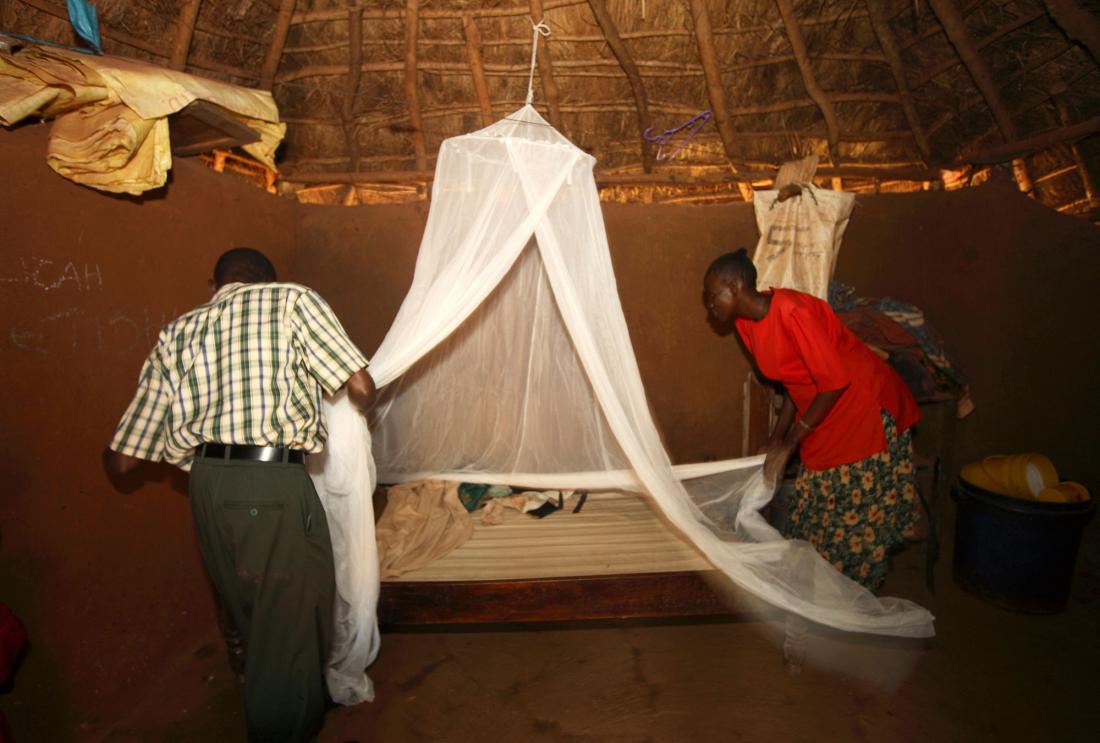The Role of Exposure, Social Networks and Marketing Messages in Households' Willingness to Pay for Malaria Prevention in Kenya
- Rural population
- Citizen satisfaction
- Malaria
- Social networks
- Preventive health
- Subsidies
- Estimating the Impact of Means-tested Subsidies Under Treatment Externalities with Application to Anti-Malarial Bednets
- Short-Run Subsidies and Long-Run Adoption of New Health Products: Evidence from a Field Experiment
- What Matters (and What Does Not) in Households' Decision to Invest in Malaria Prevention
Policy issue
Over 10 million children under 5 die every year in the world. It is estimated that nearly two thirds of these deaths could be averted using existing preventative technologies, such as vaccines, insecticide-treated materials, vitamin supplementation or point-of-use chlorination of drinking water. A key policy question is how to increase availability and adoption of these technologies. In particular, what are the roles of prices, social networks and marketing in the adoption of such products? A commonly proposed way to increase adoption in the short-run is to distribute those essential health products for free or at highly subsidized prices. The rationale for some subsidization is evident for health interventions that generate positive health externalities. In addition, when the majority of the population is poor and credit-constrained, subsidies might be necessary to ensure access to the technologies.
For products like vaccines, one-time adoption is sufficient to achieve eradication of the corresponding disease -- every child needs to be immunized only once. But other products, such as water treatment kits or anti-malarial bednets, require sustained adoption and use to generate the hoped-for health impact. A key question is whether policies aimed at achieving immediate adoption of such technologies increase or dampen their long-term use. It is often argued that free or highly subsidized distribution may generate a “dependency” effect, whereby beneficiaries anchor around the subsidized price and refuse to pay for the product once the subsidies are lifted. Furthermore, if people do not put free products to good use, incorrect information about the quality of the product might diffuse through the community. In this context, marketing messages might be important to increase adoption.
Context of the evaluation
In Kenya, malaria is responsible for one out of every four child deaths.1 It impacts economic growth and productivity, and almost 170 million working days are lost annually due to the disease.2 Insecticide-treated bed nets (ITNs) are used to prevent malaria infection and have been proven highly effective in reducing maternal anemia and infant mortality, both directly for users and indirectly for non-users with a large enough share of net users in their vicinity. ITNs have been shown to reduce overall child mortality by 18% and reduce morbidity for the entire population. Despite their proven efficacy, less than half of Kenyans sleep under an ITN. Priced at US$5-7 per net, they are unaffordable to most families. Recently, a new generation of ITNs was invented: the long-lasting ITN (LLIN), which keeps its insecticide properties for its entire lifespan (typically 3-4 years).

Details of the intervention
Households were given a voucher for a LLIN at a randomly assigned subsidy level, ranging from 40-100%. The final prices ranged from 0 to US$4.60 and households had three months to redeem their voucher. Twelve months after the distribution of the first LLIN voucher, households received a second LLIN voucher, redeemable at the same retailer as the first LLIN voucher received a year earlier. Unlike the first voucher however, all households faced the same price (US$2.30) for this second voucher. By comparing the take up rate of the second, uniformly-priced voucher in the second phase price groups, researchers are able to test whether being exposed to a large or full subsidy dampens or enhances willingness to pay for the same product a year later.
This study also evaluated the effects of two interventions based on behavioral models derived from psychology: varying the framing of the perceived benefits; and having individuals verbally commit to purchase the product. At the time they received their first voucher, households were exposed to a randomly assigned marketing message. The “health framing” group emphasized the morbidity and mortality due to malaria which could be avoided by using the net. The “financial framing” group emphasized the financial gains households would realize (from averting medical costs and loss of daily income) if they could prevent malaria. A third group received no marketing message. Finally, a randomly selected half of all the households were asked to verbally commit to buy the ITN, and state who would sleep under it once they had bought it.
Results and policy lessons
Diffusion Effects: Gaining access to a free or highly subsidized LLIN in the first year increased households’ reported, as well as observed, willingness to pay for a second LLIN. This positive experience effect trickles down to others in the community: households facing a positive price were more likely to purchase the LLIN when the density of households around them who received a free or highly subsidized LLIN was greater.
Marketing Effect: Neither of the two framing options (health or financial) had any impact at all on LLIN take up, and women to do not appear to have a different price-elasticity than men. Likewise, the verbal commitment treatment had no impact on actual investment behavior, despite a 92% initial agreement to purchase the LLIN.
1The World Bank, “News & Broadcast: World Bank Intensifies Anti-Malaria Efforts in Africa”, http://go.worldbank.org/IWWIICOOC0. (Accessed August 26, 2009)
2The World Bank, “Booster Program for Malaria Control in Africa – Kenya,” http://go.worldbank.org/EGMG4G6DX0. (Accessed September 14, 2009)


